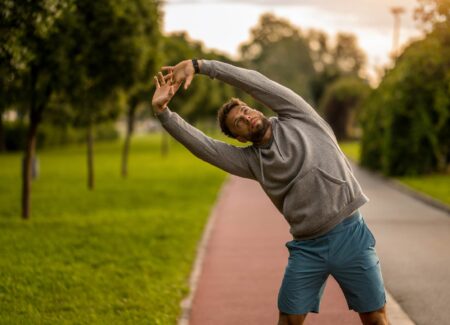

Concussions in sports have been a mainstay topic for the last several years, but concussions can impact individuals of all ages, not just athletes. Recreation-related and non-contact concussions can happen from everyday activities, making it even more important to take note of some of the signs and symptoms of a concussion and what to do if you suspect someone has one.
Physical therapy can help patients with post-concussion recovery. Take a look at some of these concussion stats that may surprise you.
Concussions are not a one-size fits all. Each concussion is unique to the individual who has sustained the injury. An individual who has sustained a concussion may experience one symptom or have multiple symptoms. In addition, some symptoms might take several hours to appear, which is why a concussion cannot be ruled out instantly. Instead, individuals who may have experienced a concussion need to be regularly monitored and evaluated to ensure proper treatment for a successful recovery.
Concussions can also last anywhere from several days to several months. Each concussion is unique which also means that the treatment for concussion and post-concussion symptoms can last a variable amount of time for each injury.
Non-contact sports account for some of the highest concussion rates every single year. When individuals think of concussions, they often think of contact sports which include hockey and football, where bodily contact is prevalent. Soccer and other non-contact sports like cheerleading lead the way for non-contact sports concussions.
In a study published in 2014, two sports concussion clinics evaluated several hundred athletes to get a better understanding if there was under-reporting when it came to concussions or concussion-related symptoms. Their study found that nearly 30.5% of athletes in the 486 patient study found that they had sustained a previously undiagnosed concussion.
Another important stat to note is that concussions can occur from everyday activities, not just sports-related activities. A concussion can occur from a sudden jarring movement to the head or neck area, or can occur with a simple bump on the head getting in and out of a car. Motor vehicle accidents and other common day to day activities may be a contributor to a concussion.
Younger individuals may take longer to recover from concussions than older individuals. Based on research that evaluated youth athletes between the ages of nine and sixteen, adolescents were more sensitive to the consequences of concussions than children or adults.
Individuals who sustain a concussion may be more likely to experience subsequent concussions in the future. In a study that evaluated 4,251 player seasons, 184 players had reported a concussion. The study found that of those individuals who sustained the concussion and had a history of 3 or more previous concussions, they were three times more likely to have a concussion incident than individuals who had no concussion history.
In the recent study we mentioned earlier which highlighted concussion trends in high school sports for 20 different sports, cheerleading was the only sport out of the twenty that were evaluated that had a higher rate of concussions occurring during practice than in competition. The study found that there were 3.6 concussions reported in practice compared to 2.22 concussions reported in competition per 10,000 athletic events where the athlete participated in practice or competition.
Individuals who have experienced a concussion or are dealing with concussion-related symptoms should see a qualified healthcare professional and put on a proper treatment plan early. A delay in care can lengthen the time it takes for the patient to fully recover and/or deal with post-concussion symptoms.
Concussions are traumatic brain injuries that can often be caused by a blow, jolt, bump to the head, or jarring motion to the body which can cause the head and brain to move back and forth rapidly. Concussions can be tricky injuries, because they may not always present themselves with consistent symptoms or show anything at all. Some of the most common concussion symptoms that may appear include headaches, poor balance or coordination, slurred speech, nausea, vomiting, double or blurred vision, confusion, memory loss, mood swings, slower mental processing, or sensitivity to light and sound.
Concussion symptoms may appear recently after the injury, or they may take several hours to even days. Concussion symptoms can also progressively get worse with time. The CDC highlights a good example in which a student might get hurt and feel a bit dazed after the injury, and then several hours later forget how the injury occurred at all.
The CDC example highlights individuals who have sustained a concussion should be closely monitored for the next several days to notice any concerning change or worsening of their symptoms.
Concussions are serious and traumatic brain injuries that need to be evaluated and treated properly. If you suspect someone has sustained a concussion, you should consult with a qualified healthcare professional and visit the emergency room where the individual can be further evaluated and monitored.
Concussions are serious health injuries that need to be promptly treated by a healthcare professional who is trained in identifying, evaluating, and managing concussion symptoms.
Physical therapy can be an effective treatment method for post-concussion recovery programs. Our licensed and trained physical therapists help individuals who have sustained a concussion in several ways by examining and addressing several post-concussion symptoms and deficiencies which may include cervical musculoskeletal impairments, autonomic/exertional tolerance impairments, vestibulo-oculomotor impairments, and motor function impairments.
To learn more about how physical therapy can be an effective treatment option for post-concussion related symptoms, schedule an appointment today at a nearby physical therapy clinic!


